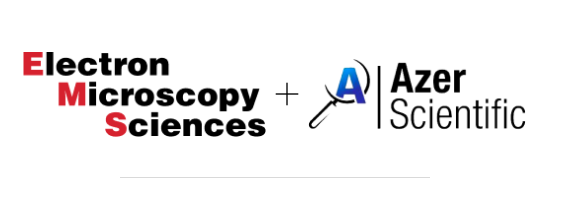



Session II :
March 28, 2024
New and Not-so-New Developments in Biological EM




Thank you Sponsors!
Event was successfully completed. Click on the title of each presentation to access recorded video.

Paolo Ronchi

Paolo has a cell biology background and he did his PhD and postdoctoral studies on membrane trafficking using light and electron microscopy approaches. Since 2014, Paolo has been working in the Electron Microscopy Core Facility of the EMBL in Heidelberg, Germany. He has run a number of projects in collaboration with internal and external users. Among other things, he was involved in the implementation of 2D on-section CLEM when he joined the facility. Later on, he has become the volume EM expert in the team and his main current interest is the development of workflows and strategies based on multimodal imaging to optimize volume EM acquisitions.

Katie Moore

Dr. Katie Moore is a Senior Lecturer in Materials Characterisation in the Department of Materials. Katie has been working in the field of NanoSIMS analysis since 2008. She has been using the NanoSIMS on a range of biological materials, primarily to investigate trace element uptake in crops, such as arsenic uptake by rice and iron in wheat grain, but also to investigate the mechanism and uptake of drugs. She frequently uses isotopic labelling to show the mechanism of uptake and location of specific compounds.
The NanoSIMS is a high resolution secondary ion mass spectrometry (SIMS) instrument that can be used to image and measure the isotopic and elemental distribution of elements in all types of samples, routinely achieving 100 nm spatial resolution. It is capable of detecting isotopes of almost every element in the periodic table from hydrogen to uranium at ppm or ppb levels depending upon the element. It is very complementary to EM based chemical mapping techniques.
Tech Talk
Ru-ching Hsia


Dr. Hsia has a Ph.D. in Microbiology and Immunology from Stanford University. She is Principal Scientist and Head of the Electron Microscopy Laboratory (EML), at the Frederick National Laboratory-National Cancer Institute (NCI). Before joining EML, she was a Professor and Director of the Electron Microscopy Core Imaging Facility at the University of Maryland, Baltimore and in the Department of Embryology, Carnegie Institution for Science, Baltimore. Dr. Hsia has extensive experience in transmission and scanning electron microscopy, light microscopy, instrumentation, and sample processing for biomedical research. She was a Council member of the Microscopy Society of America and the Program Chair for the 2023 Microscopy & Microanalysis conference. Dr. Hsia organizes scientific symposia and training workshops, solidifying her commitment to education and research in microscopy and imaging related techniques and advancement of the biological EM field.
Tech Talk
Al Coritz

Reliability, Versatility and Speed: Benefits of using the Prepmaster 5100 EM Specimen Prep Robot


Al Coritz is a seasoned professional with over two decades of experience in the field of microscopy, currently serving as the Applications & Service Manager at Electron Microscopy Sciences (EMS) in Hatfield, PA since July 2000. In this role, Al plays a vital role in supporting EMS's customer base by providing expert guidance on current techniques and methods in scanning electron microscopy (SEM) and transmission electron microscopy (TEM). He actively develops new methods and instrumentation to enhance researchers' capabilities in gathering data through various microscopy techniques. Prior to his tenure at EMS, Al served as the Cryobiology Product Manager at RMC for over five years, where he demonstrated his expertise in managing products related to cryobiology. With a strong commitment to advancing scientific research and supporting the needs of investigators, Al Coritz continues to be a valuable asset in the microscopy community.